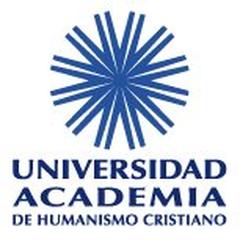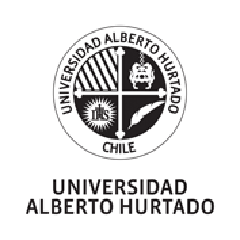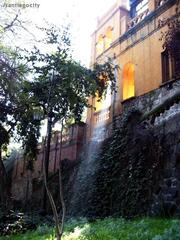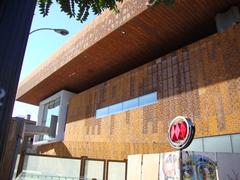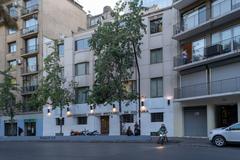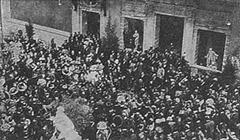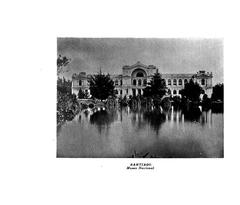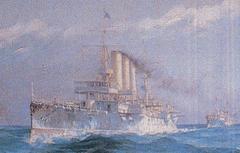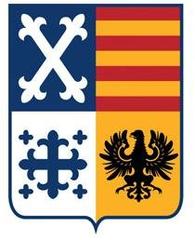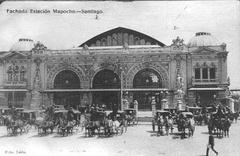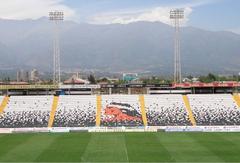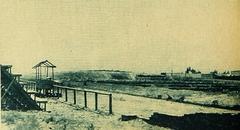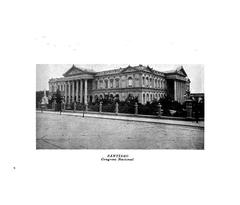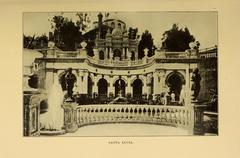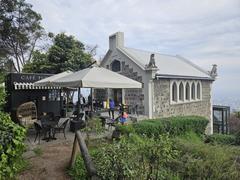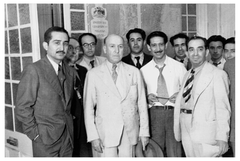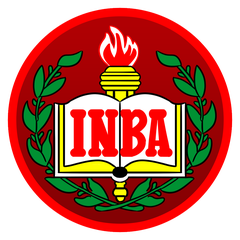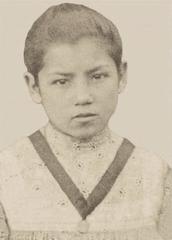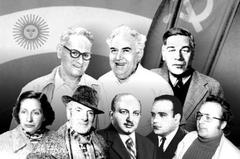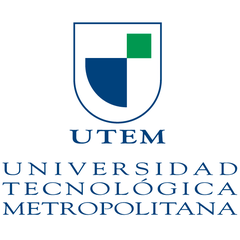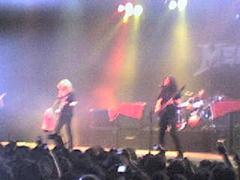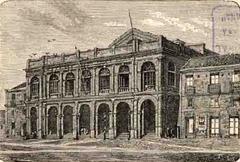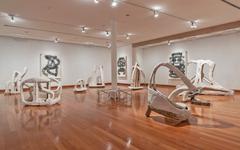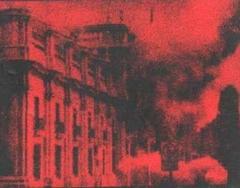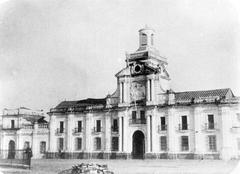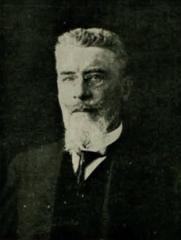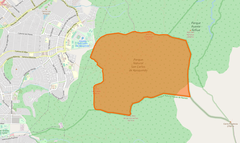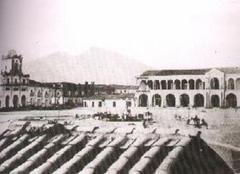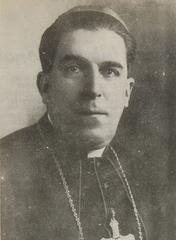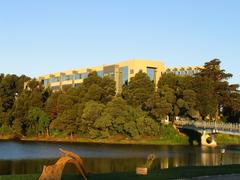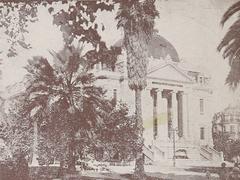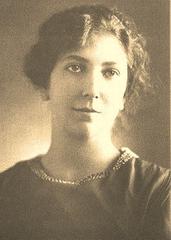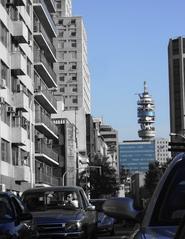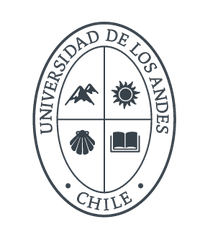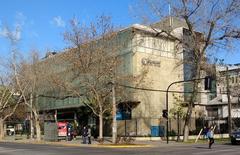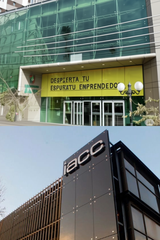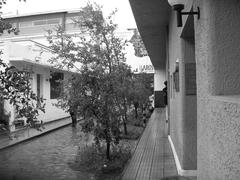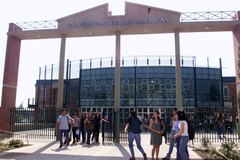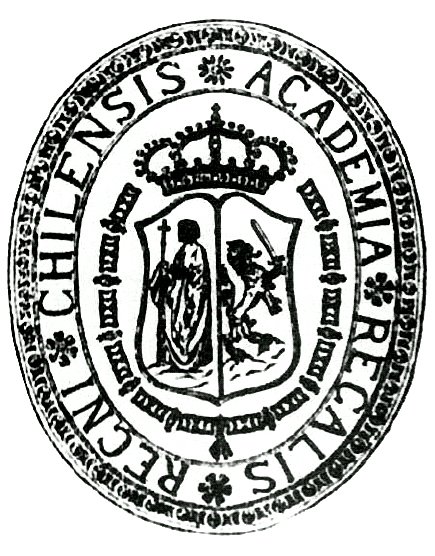
Universidad de San Felipe, Santiago, Chile: Visiting Hours, Tickets, and Historical Guide
Date: 14/06/2025
Introduction
The Real Universidad de San Felipe, established by royal decree in 1738 and inaugurated in the mid-18th century, stands as Chile’s first university and a cornerstone of higher education and culture in Santiago. Its founding marked a transformative shift from ecclesiastical to secular education, encompassing disciplines like law, theology, medicine, and philosophy. Over centuries, this institution has been pivotal in shaping Chile’s intellectual, political, and social landscape, leaving a legacy that endures through successor institutions and preserved heritage sites.
While the original colonial structures have not survived, visitors can still immerse themselves in this rich history by exploring sites such as the University of Chile’s Casa Central, the Museo de Arte Contemporáneo, and the Teatro Municipal de Santiago. This guide provides detailed historical context, up-to-date visiting hours, ticketing information, accessibility guidelines, travel tips, and recommendations for nearby attractions—ensuring you can make the most of your visit to Santiago’s academic and cultural heart.
For the latest information, consult the University of Chile’s official website and the Santiago Tourism Board (SantiagoChile.com, Memoria Chilena, Experience Chile).
Historical Overview
Foundation and Colonial Legacy
Founded by royal decree in 1738 and officially inaugurated in 1758, the Real Universidad de San Felipe was an integral part of the Bourbon Reforms, a Spanish Crown effort to modernize colonial administration. Named for King Philip V, it was modeled after Spain’s University of Salamanca, serving as a vehicle for secular, state-controlled education in Chile (SantiagoChile.com). Prior to its establishment, higher learning was the preserve of religious orders. The university expanded opportunities, awarding degrees in law, theology, medicine, and philosophy, and laying the foundation for a professional class in colonial society.
Role in Independence and Chilean Society
The university’s influence extended beyond academics, shaping Chile’s independence movement and intellectual culture. Alumni such as José Miguel Carrera, Manuel de Salas, and Andrés Bello were instrumental in the struggle for independence and subsequent nation-building (SantiagoChile.com). The institution became a crucible of Enlightenment ideas, fostering debate on sovereignty, citizenship, and legal reform.
After independence, the university was transformed into the Universidad de Chile in 1842, symbolizing Chile’s evolution from a colonial territory to a republic with modern, secular institutions.
Regional and Cultural Significance
As one of a handful of royal universities in Spanish South America, the Real Universidad de San Felipe had significant regional influence, shaping educational models in the Southern Cone. Its curriculum and administration inspired reforms across Latin America, and its graduates contributed to constitutional and legal developments throughout the region.
The university also promoted the study of local history, natural sciences, and Spanish-language literature, with figures like Andrés Bello playing a vital role in standardizing Spanish grammar and fostering literary culture (SantiagoChile.com).
Visiting the Real Universidad de San Felipe: Sites, Hours, and Practical Information
What Can You Visit Today?
Although the original buildings have disappeared, the university’s legacy is preserved in several notable sites:
- University of Chile’s Main House (Casa Central): Built in 1863 at Avenida Libertador Bernardo O’Higgins 1058, this neoclassical monument stands near the original university grounds. It houses historical exhibitions and cultural events (Monumentos Nacionales de Chile).
- Museum of Contemporary Art: Former School of Fine Arts (1910), home to rotating art exhibitions.
- Law Faculty Building: Opened in 1937, another architectural highlight.
- Astronomy Observatory of Cerro Calán: Founded in 1962, reflecting the university’s ongoing scientific contributions.
- Teatro Municipal de Santiago: Built on the former university site, now a premier venue for opera, ballet, and concerts (Wikipedia, Experience Chile).
Visiting Hours & Admission
- Casa Central: Open Monday to Friday, 9:00 AM – 5:00 PM. Entry is typically free, though special exhibitions or guided tours may require tickets (Universidad de Chile).
- Museum of Contemporary Art: Open Tuesday to Sunday, 11:00 AM – 6:00 PM. Closed Mondays. Modest admission fees may apply.
- Teatro Municipal de Santiago: Open for performances and tours Tuesday to Sunday. Tour schedules vary (Teatro Municipal Official Website).
- Special Events: Extended hours and special access are often available during national heritage days.
Ticketing & Guided Tours
- Casa Central: Entry is generally free; guided tours (Spanish/English) can be arranged in advance, especially for groups or during cultural events.
- Teatro Municipal: Guided tours cost approximately CLP 4,000 (USD 5). Tickets for performances range from CLP 5,000–30,000 (USD 6–35). Book via the Teatro Municipal website.
- Museum of Contemporary Art: Small entrance fee; discounts for students and seniors.
Accessibility
All main sites (Casa Central, Museo de Arte Contemporáneo, Teatro Municipal) are wheelchair accessible and equipped with ramps, elevators, and adapted restrooms. Some historic sites may have limited accessibility due to their age, so check with venues before visiting.
How to Get There
- Metro:
- Casa Central: Nearest station is “Universidad de Chile” (Lines 1 and 3), exiting directly onto Avenida Alameda (Metro de Santiago).
- Teatro Municipal: Closest stations are “Santa Lucía” (Line 1) and “Universidad de Chile” (Line 1), both a short walk away.
- Buses and Taxis: Readily available throughout downtown Santiago. Ride-sharing apps are also popular.
- Walking: The city center is pedestrian-friendly, allowing easy exploration of nearby attractions.
Nearby Attractions
- Plaza de Armas: Santiago’s historic core, featuring the Metropolitan Cathedral and Central Post Office (Visit Chile).
- Museo Histórico Nacional: Explores Chilean history from pre-Columbian to modern times.
- Museo Chileno de Arte Precolombino: Renowned for its pre-Columbian art collection.
- Lastarria & Bellavista Neighborhoods: Vibrant areas rich in cafes, galleries, theaters, and nightlife.
- Barrio Paris-Londres: Noted for its European-style architecture and proximity to the San Francisco Church.
Best Time to Visit
- Seasons: Spring (September–November) and fall (March–May) offer mild weather and fewer crowds (Travellers Worldwide, Lonely Planet).
- Cultural Events:
- Fiestas Patrias (September): National celebrations, parades, and folk performances.
- Opera and Ballet Season (March–December): Teatro Municipal’s main cultural season.
Practical Tips for Visitors
- Language: Spanish is predominant; basic phrases or translation apps are helpful.
- Currency: Chilean peso (CLP). Credit cards are widely accepted, but carry cash for small purchases.
- Safety: The city center is generally safe, but be mindful of belongings.
- Dress Code: Smart-casual for performances; casual for tours and daytime visits.
- Photography: Allowed in public areas; restrictions during performances and in certain museums.
- Amenities: Cafés, restaurants, hotels, and public restrooms are plentiful in the downtown area.
Frequently Asked Questions (FAQ)
Q: Can I visit the original buildings of the Real Universidad de San Felipe?
A: No, the original structures no longer exist. The legacy is preserved at Casa Central, Teatro Municipal, and other heritage sites.
Q: What are the visiting hours and ticket prices?
A: Casa Central is open Monday–Friday, 9:00 AM–5:00 PM (generally free). Museum and theater hours vary; check online for specifics.
Q: Are guided tours available in English?
A: Yes, but advance booking is recommended.
Q: Is the site accessible for visitors with mobility challenges?
A: Yes, most major sites are wheelchair accessible.
Q: Which attractions can I combine in a day?
A: Casa Central, Teatro Municipal, Plaza de Armas, and museums are all within walking distance.
Enhance Your Experience
- Combine Visits: Pair your visit with nearby museums and neighborhoods for a full day of cultural exploration.
- Audiala App: Download for audio-guided tours and interactive maps.
- Cultural Etiquette: Greet with “Buenos días” or “Buenas tardes” in shops and venues.
Visuals and Media
- Photos: Casa Central’s neoclassical façade, Teatro Municipal’s interiors, and bustling city streets with alt tags such as “University of Chile Main House - Santiago historical site” and “Teatro Municipal de Santiago National Monument”.
- Interactive Content: Virtual tours and maps of the Casa Central, Teatro Municipal, and Santiago’s historic center.
Additional Resources
- University of Chile Official Website
- Santiago Tourism Board
- Memoria Chilena Archive
- Experience Chile Downtown Guide
- Monumentos Nacionales de Chile - Casa Central
- Metro de Santiago
- Teatro Municipal de Santiago
Conclusion and Recommendations
Exploring the legacy of the Real Universidad de San Felipe offers a journey into Chile’s colonial past, the birth of its intellectual elite, and its transformation into a modern republic. While the physical university no longer stands, its spirit endures through the University of Chile’s Casa Central, the Teatro Municipal, and Santiago’s vibrant historic core.
Accessible, engaging, and deeply significant, these sites are essential for anyone interested in Chilean history, culture, or architecture. For the best experience, plan ahead, check official sources for updates, and consider guided tours to enhance your understanding. Combine your visit with nearby attractions and cultural events for a comprehensive experience of Santiago’s heritage.
Start planning your visit today to step into the story of Chile’s first university and its enduring impact on Latin American society. (SantiagoChile.com, Memoria Chilena, Universidad de Chile, Experience Chile)
Reliable Sources and Further Reading
- University of Chile Official Website
- SantiagoChile.com
- Memoria Chilena – Universidad de San Felipe
- Experience Chile – Downtown Santiago
- Monumentos Nacionales de Chile - Casa Central Universidad de Chile
- Metro de Santiago
- Teatro Municipal de Santiago Official Website
- Chile Travel – Official Tourism Site
- Visit Chile Official Tourism Guide

